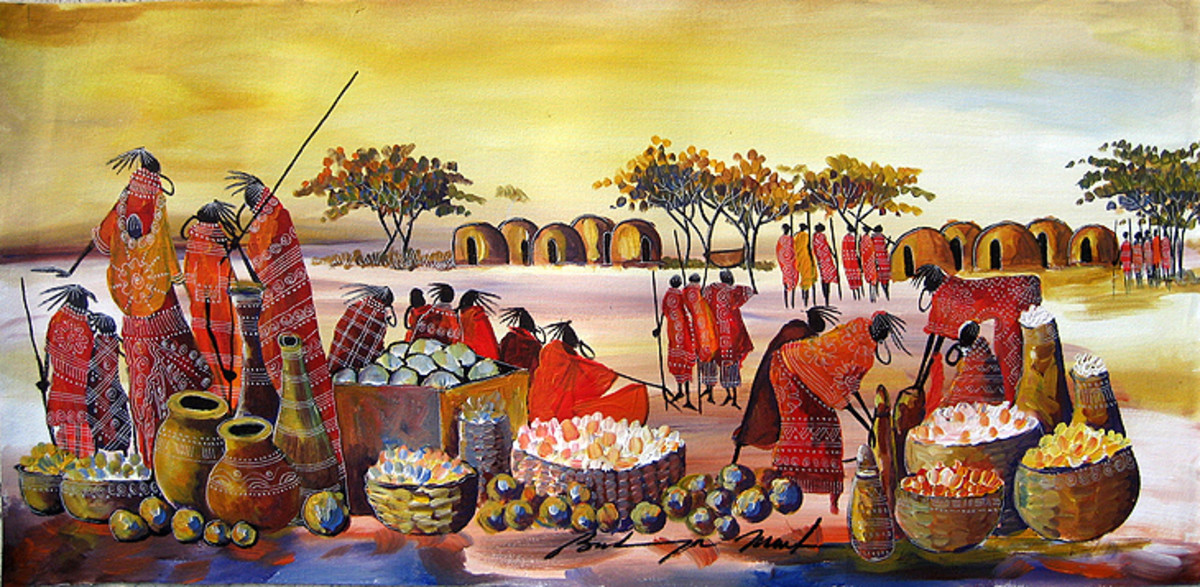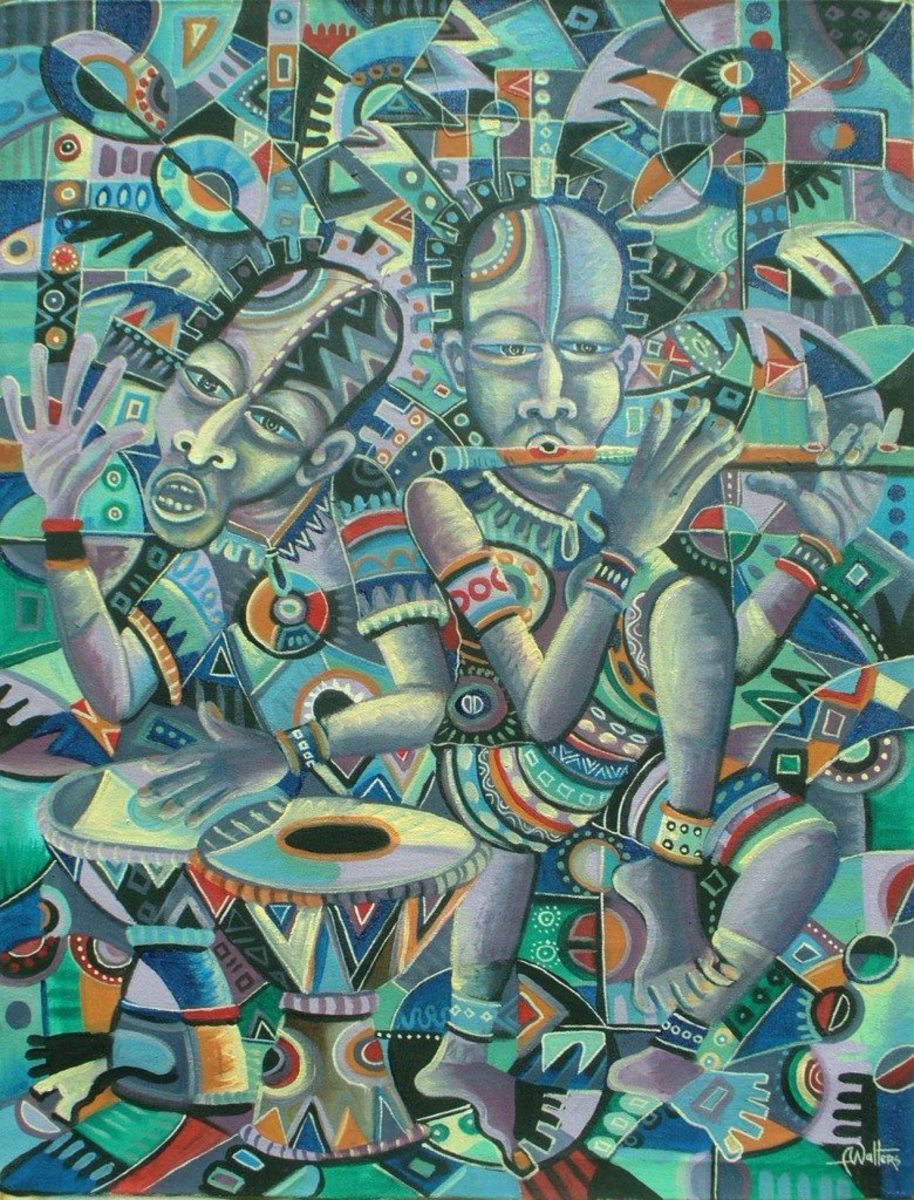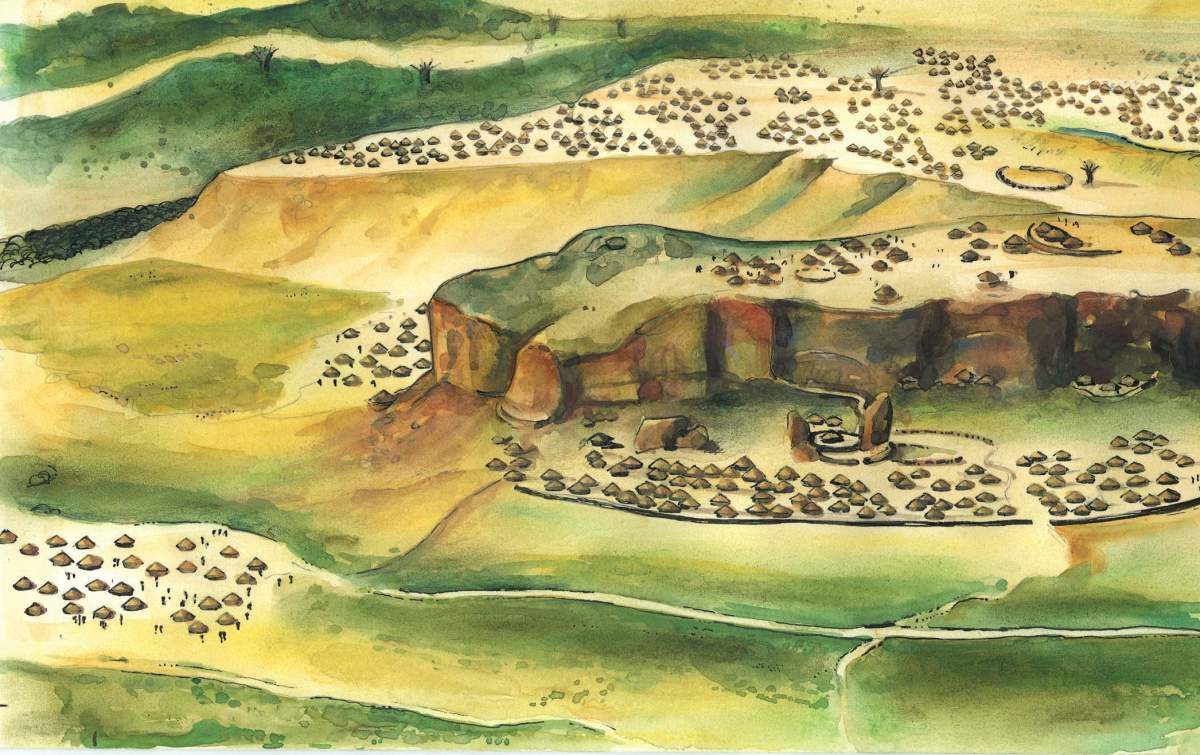Communication and Culture as Catalysts for Rewriting the African Narrative in the Kenyan Church
Abstract:
The Catholic Church in Kenya is vibrant. The presence of two emeriti Cardinals and a serving one in Nairobi plus its array of human capital in terms of priests, religious and laity, as well as rich cultural dynamics, tells the story more. Despite this seeming flamboyance, the Church in the East African country has not reached its potentials. This qualitative paper, “Communication and Culture as Catalysts for Rewriting the African Narrative in the Kenyan Church” used theCross-Culture theory as theoretical framework to ascertain the matter. It argued that lack of aunified theology of inculturation and implementing same, reliance on handouts from Europe and America, ethnicity and mediocrity are responsible for the backwardness. The study suggested developing an inculturated language of faith through creating a nexus between African communication and culture as ways of rewriting the African narrative in the Kenyan pastoral context. It concluded that effective communication and culture can create a new template not only in telling the Kenyan version of the narrative but in enabling the Church in Kenya reach its full potentials.
Introduction
The Catholic Church in Kenya: A Historic Sketch
Early 1960s signaled the end of missions. What this meant is that the juridical autonomy of the local church was being established hand in hand with the “Kenyanisation” of the highest positions of leadership. The prevailing aim of this policy was to establish national churches to which “missions” were somehow subject. This was inevitable, since the nation was in the process of becoming autonomous. Many missions, however, did not seem to be in any hurry, for while the achievement of autonomy itself was relatively easy to acquire, the relationships with the former missionary societies was something that had to be negotiated. In some instances missionary societies wisely handed over their property and responsibility from the beginning, thereby avoid friction. In other cases, this was not possible, and an uneasy relationship or partnership existed sometimes, with severe consequences and ramifications for the human relationships. [56] The country became independent on December 12, 1963. Before that date, few churches had become autonomous. The Presbyterian Church of East Africa, which seems to have set the stage, became autonomous in 1956, but did not have African leadership until1961, when Charles Muhoro was elected the first African moderator. John Gatu became the first general secretary in 1964.Within the Africa Inland Mission, there was a very gradual shift. It was in 1943 that the mission became the Africa Inland Church, although missionaries continued to be decision makers. In 1971, in a symbolic gesture that occurred in Machakos, the director of the Africa Inland Mission handed over the responsibility for mission work in Kenya to the new church leader, Rev. Wellington Mulwa. In 1972, a new constitution was drawn, giving the church autonomy and jurisdiction over the mission work. The Africa Inland Mission still exists side by side with its sister church as a mission within the church, and has kept the major station, Kijabe, as its property. In this type of ambivalent relationship, there are bound to be strained relations. They will have to dissolve the mission so that it is absorbed into the church, and missionaries will have to work under the discipline of the local Church. [57] The difference between the mission and the national church was exacerbated in 1966 when the Africa Inland Mission voted to sever all connections with the National Christian Council because of their too open and liberal ecumenical approach. When the leaders of the Africa Inland Church were approached to consider taking the same position, they turned it down, as they had no intention of withdrawing from the NCCK. As a result, the Africa Inland Mission did not do so either. [58]
The Church of the Province of Kenya (Anglican) became autonomous gradually. It was in 1921 that the first diocesan synod drew Africans and Europeans together to discuss the ministry of one Church. In 1955, the first African bishops of the Church were consecrated in Uganda by the Archbishop of Canterbury. These were Festo Olang’ and Obadiah Kariuki. The following year saw the creation of the dioceses of Maseno and Mt. Kenya. Another diocese was created for the Rift Valley area, named Nakuru, while Mombasa was subdivided into Mombasa and Nairobi. In 1960, the Anglican Church in East Africa became a province, thus becoming an autonomous body with Leonard Beecher as its first archbishop. The Church of the Province of East Africa incorporated Anglican dioceses in Kenya, Tanganyika, and Zanzibar. In 1970 the province was divided in two, with Kenya and Tanzania. Festo Olang’ thus became the first Archbishop of Kenya.
The Methodist Church ceased to be the Methodist Missionary Society in 1955. It then became the Methodist Church in Kenya, even though it continued to be an overseas district of the British Conference. The Church became autonomous when the Deed of Foundation was signed in January of 1967 at the City Hall, thereby inaugurating the new conference. With the new conference, the first presiding bishop, Ronald Mn’gong’o, was appointed with Lawi Imathiu as the secretary of the conference. Later on, districts were formed with district synods meeting annually.
Catholic dioceses can never be said to be autonomous in the same sense as other Churches are. They all have to be under the authority of the Pope, hence, all important decisions affecting the religious life of the Catholic people must be decided in Rome. Catholic dioceses, however, can be said to have a certain measure of independence in the sense that the bishop of a diocese makes decisions that affect his diocese and is responsible only to the Pope. In Catholic circles, a diocese or a church is independent in so far as it is self-sufficient in personnel and financial support. [59] Generally the Catholic Church refused to be stampeded by the arrival of independence. Even though the first Catholic bishop, Maurice Otunga, became assistant bishop of Kisumu in 1957, by 1968 there were still nine white bishops compared to two African bishops. By 1973, when there were thirteen dioceses, there were still seven white bishops and six African bishops. In 1971, Maurice Otunga succeeded John McCarthy to the post of Archbishop of Nairobi. In 1972, he was made a cardinal, the highest honor within the Catholic Church.Other major churches that were founded by foreign missions have taken virtually the same road towards autonomy. The Salvation Army, the Seventh Day Adventists, the Church of God, the East African Yearly Meeting of Friends, the Pentecostal Churches, and the Baptist Churches have developed local leadership and indigenous ministry. The Churches in Kenya have been localized while still retaining an ecumenical link with churches from other parts of the world, thus portraying the image of a church that is not only national but universal in outlook.
BODY
Conceptual Explication Communication
This paper adopts the fundamental understanding of communication as a two-way
process of reaching mutual understanding (Business Dictionary, 2018). Communication involves participants in the communicative act who not only exchange (encode-decode) information, news, ideas and or feelings but also create shared meaning. Communication connects people, places, and cultures. The communicative process is complete once the receiver understands the sender’s message and gives a feedback. Communication requires a sender, a message, a medium, and a recipient.Communication can occur across vast distances in time and space, as such, the receiver does not need to be present or aware of the sender’s intention to communicate at the time of communication. Communication requires that the communicating parties share an area of communicative commonality. According to Clark (1997) communication involves three primary steps: First, the existence of information (concepts, ideas, information, or feeling) in the mind of the sender; second, encoding the message that is sent to a receiver in words or other symbols; and third, decoding - a process whereby the receiver translates the words or symbols into a concept or information that a person can understand.In the late 1940s and early 1950s, communication was understood in terms of the linear, top-down, mechanical or transmission approach. It assumed that the sender knows all and is the only active one, acting on the receiver. If the receiver is acting at all, it is to swallow what the sender transmits through a medium or media. What matters here is the intention of the sender. It is authoritarian because it denies the receiver the dignity of being human. It puts the person as incapable of assimilating, processing, and responding to the received message. As an abstraction of reality, it leaves out too many important aspects of the process of communication such as feedback. It was Shannon and Weaver (quoted by McLuhan, 2008) who laid the foundation of all Western “theories of communication” with their model of communication which entails Source to Message, Channel and Recipient. Because of this, McLuhan often pointed out that the West has no theory of communication. He argued that we are denied one by our visual bias. That is to say, we have no theory of change. Communication means change. If something is communicated, the recipient has changed in some manner or degree. Our “common sense” idea of communication is merely one of transporting messages from point to point (Shannon & Weaver, cited in McLuhan, 2008)).Paulo Freire criticised this traditional system of communication as non participatory and paternalistic. Freire engaged the intersections of communication,49 culture, and participation (Freire, 1973) to make his point. He discribed communication as a circular process of reflection-action-reflection through a participatory process(Freire and Ira Shor, 1989, p.4). This is akin to Martin Buber’s participation as espoused in his book I and Thou (Buber, 2009).The participants in the process of communication are active, creative, and able to store information and retrieve it for subsequent communication. Paulo Freire articulates the basic assumption behind this model when he insists that individuals are beings of relationships and primary to these relationships is communication, which he defines as “intersubjectivity;” that is, an activity that is carried out between subjects and subjects as opposed to between subject and object or between objects (Freire, 2013). Communication is primarily an interactive and dialogical activity. In this activity, all
“enter into,” co-participate in the object of communication that mediates them (Freire,2013).On the whole, communication is a human activity because it takes place between active people. It is a given that where there is communication, there also is culture – and where there is culture, communication is unavoidable. In that sense, culture in itself is communication (John Paul II, 1984). In this context, all communication activities involve a transaction between people. It is communication that distinguishes human beings from lower animals. Its unique attribute is what makes us beings-in-relation. Communication presupposes human interaction since it is a collective and interactive activity that takes
place between active people. Communication engenders common sharing, social
intercourse, mutual exchanges, and fellow-feeling. It refers to either an action on others,an interaction with others, or a reaction to others.
Culture
From its etymological roots, the word culture means “the tilling of land.” It comes from middle French culture and directly from Latin cultura which means “a cultivating, agriculture.” Figuratively, culture means “care, an honouring” which is a past participle stem of colore – “tend, guard, cultivate, till.” It is believed that the figurative sense of “cultivation through education” was first attested in c.1500 - the intellectual side of civilization came to the fore in 1805, while that of customs and achievements of a people began in 1867 (Harper, 2004).According to Moekema (1998, pp. 128-133), culture is encapsulated in the fivefold values of African communalism namely; supremacy of community, sanctity of authority, respect for old age, usefulness of the individual and religion as a way of life.Gimba (2013) underscores this when he opined that “… culture is anything that redeems my identity, not the primitive emblems that reduce and mock my intellectual and artistic abilities.” It is culture that makes one Kanuri, Jukun, Hausa, Igbo, Yoruba, Alago,Tiv,etc (Yakubu, 2014).Pope John Paul II succinctly defines culture as: “…a specific dimension of the existence and being of man. It creates among the persons within each community a complex of bonds, determining the interpersonal and social character of human existence. Man is both subject and creator of culture in which he expresses himself and finds his equilibrium” (John Paul II, 1984). Drawing from the description above, the operational definition here is that, culture is a big capsule that accommodates life, people,events, values and mores, and thought patterns, as well as idiosyncrasies of a people 50 which makes them unique. The true nature of every culture is that, it is a dynamic reality that is continually pushed by the globalization movement (Buono, 2002, p. 142).
Inculturated Language of Faith
We cannot discuss an inculturated language of faith without having a basic understanding of what inculturation is. Inculturation is defined as the incarnation of the Christian life and Christian message in a particular cultural context in such a manner that the experience does not only find expression through elements that are proper to the culture in question but become a principle which animates, directs, and unifies culture in such a way that it transforms and remakes it bringing about a new creation (Arrupe, cited in Tyohemba & Ganga, 2012, p. 52).Therefore, an inculturated language of faith is shading the light of Christ on the culture of a people in a way that the faith becomes intelligible to the culture and the culture becomes recognizable to the faith. This makes for a renewed and enlightened faith and bridges the gap between faith and culture in the life of the people.
DISCUSSION
The Church in Africa is growing rapidly. Some ecclesiastical commentators believe that this growth became noticeable from the time of the Second Vatican Council (1962-65)Through the pontificate of Pope John Paul II (1978-2005), who made 14 separate trips to the continent (Bunson, 2015). It would appear that John Paul II was one of the few pontiffs who not only had Africa at heart, but was excited about the prospects of the continent. Coincidentally, the same disposition was given to the Church in Africa by his successor, the then-Pope Benedict XVI at the 2009 Special Synod of Bishops on the Church in Africa when the Pope described Africa as “an immense spiritual ‘lung’ for Humanity. Consequently, it would seem that when Benedict XVI referred to Africa as the“spiritual lung for humanity,” he was talking about the Church in Kenya. The blessings of the Kenyan Church are numerous because the country is made up of rich and diverse cultures . These blessings range from the spiritual to the human and temporal goods of the Church. It is an established fact that in countries like Kenya and Congo, parishes regularly schedule four or five Masses every Sunday. Besides that, Mass attendance in the more than 16,000 parishes typically hovers around 70 percent with the Church in Africa celebrating one-fourth of all of the world’s baptisms (Bunson, 2015). The high number of parishioners patronising sacraments like Baptism and Holy Matrimony is increasing by the day. Lay associations and sodalities like the Catholic Women Association (CWO), Catholic Men Organisations (CMO), Catholic Youth Organisation , Holy Childhood Association.Legion of Mary to mention a few daily provide members of the laity with opportunities to contribute their quota to the development of the Church and the nation. With vibrant priests, religious and members of the laity in place, it is yet to be seen how the Church in Kenya is poised to change the sour narrative in national life towards greater spiritual exploits, as well as smooth relations between the Church and the State.
CONCLUSION
Lack of a unified inculturate language of faith, syncretism, the problem of ethnicity and tribalism and lack of sensitivity towards poor diocese ,Lack of studying cultures, cultural imperialism, secularism and modernism, rural/urban drift etc,Cognitive,behaviour and emotional constraints as well as failure to rise beyond the prejudice of one’sculture,greater hopes of developing a “Kenyan rite” and increase in converts and vocations as well as fostering communication .The Church equally provides facilities necessary for holistic development of the human person in consonance with the principles of Catholic Social Teaching (CST) of the Church by impacting lives especially in rural areas where majority of Kenyans live through the provision of schools, hospitals, maternity Centre’s and clinics and social centers across the country. This is in addition to its strides in media education and evangelization. Through the Directorate of Social Communications networks with other Arch dioceses and dioceses by sending and receiving news items, as well as fulfilling its primary role as the image maker of the Church in Kenyan through the publication of calendar, ordo, and directory, which are tools for public relations of the Church in Kenya As part of liturgical inculturation, various dioceses in Kenyan use the native pot, as a liturgical vessel for holding incense used for incensation and thurification.
REFERENCES
1. John Gray, Early Portuguese Missionaries in East Africa, (London, Macmillan 1958), 3. The pillar was a symbol of the sovereignty of Portugal on the East Coast, and was also patently a symbol of Christianity. See also E. Axelson, South-East Africa, 1488-1530, 15.
2. E. Axelson, South-East Africa, p. 241. It seems that the Portuguese captain at Kilwa was insensitive to the Muslim sentiments. He ruled the town with highhandedness and inconsiderate ethnocentricity.
3. John Gray, op. cit., p.9. Experience had shown that it was more expedient to sail to India from Mozambique, thus avoiding the East African coast.
4. Ibid., p. 12. The Jesuit Fransisco Nonclaro reported that until protection could be given to missionaries wanting go to the interior, nothing effective could be done.
5. Ibid., p.13. cf. Freeman-Grenville, The Mombasa Rising Against the Portuguese 1631. (London: Oxford University Press, 1980), 31. It was the practice of the Portuguese to give converts Portuguese surnames as well as baptismal names. It is therefore not possible to distinguish between African, Goan, Indian, or Portuguese Christians simply by their names.
6. Ibid., p. 14. cf. C.R. Boxer and C. de Azevedo, Fort Jesus and the Portuguese in Mombasa, 1593-1729.
7. Dos J. Santos, Ethiopia Oriental, Book 5, chapter 11. The same trickery was practiced with goats and other animals. The Portuguese were so infamous for their oppression and fraud that such occurrences were nicknamed “Pemba tricks.”
8. New converts coming into the Christian community were helpless, having been thrown out by their families for giving up the religion of their ancestors. cf. Gray, p. 18.
9. Freeman-Grenville, p. 25.
10. C. Guillain, Documents sur l’histoire, la géographie et le commerce de L’Afrique Orientale. (Paris : 4 vols. 1856-7), vol. 3, pp. 220-222.
11. J.S. Kirkman, Fort Jesus: A Portuguese Fortress on the East African Coast. (London, 1974), p. 6. Modifications and additions to the fort continued even after 1595.
12. E. Axelson, The Portuguese in South-East Africa, 1600-1700. (Witwatersrand, 1960), 80.
13. The date bas been suggested by Freeman-Grenville, op. cit., with reference to Yusuf’s letters to the Pope and to the Father-General of the Augustinians.
14. Richard Reusch, The Struggle of Mombasa for its Freedom. (Dar-es-Salaam, July 1953), Tanganyika and Records, 35.
15. Freeman-Grenville, pp. 41-46.
16. J. Standes, The Portuguese Period in East Africa (1899), transl. and ed. J.S. Kirkman, (Nairobi, 1961).
17. Zablon Nthamburi, A History of the Methodist Church in Kenya. (Nairobi: Uzima Press, 1982), 12.
18. Roland Oliver, The Missionary Factor in East Africa. (London: Longmans, 1952), 2.
19. Erasto Muga, African Responses to Western Christian Religion. (Nairobi: East African Literature Bureau, 1975), 26-29.
20. Basel became an important training institution for pietists. Krapf, like many other German and Danish Lutherans who were recruited by the C. M. S., never received Anglican orders. Rebmann and Erhardt received Anglican orders after an initial training at Islington
This content is accurate and true to the best of the author’s knowledge and is not meant to substitute for formal and individualized advice from a qualified professional.
© 2019 KESTONE WEKESA








